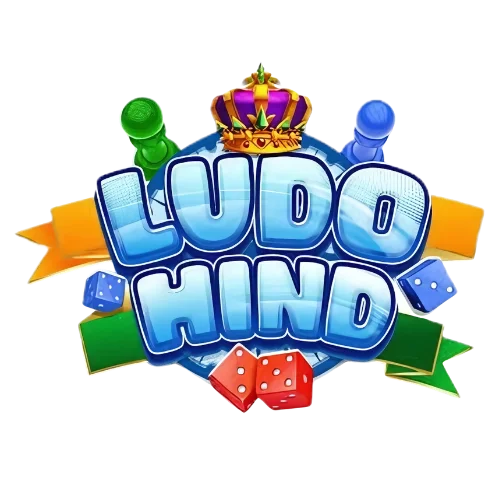Ludo has been a beloved board game in Indian households for generations. From family gatherings to friendly competitions, traditional Ludo has created countless memories. But in the digital age, a new contender has entered the scene—the Ludo Box. Featuring modern twists, tech-savvy enhancements, and even regional language options like Ludo Hindi, it promises to revolutionize how we play. But is it really worth the upgrade?
In this article, we’ll dive deep into the comparison between the classic Ludo and the new-age Ludo Box. Ready to roll the dice? Let’s get started!
What is Traditional Ludo?
Traditional Ludo is a simple, yet engaging board game that originated from the ancient Indian game “Pachisi.” Played with a physical board, dice, and colorful tokens, its charm lies in its straightforward rules and the thrill of chance. The tactile feel of rolling the dice and moving pieces adds to the nostalgia.
CLAIM YOUR ₹8,888 WELCOME BONUS TODAY!
Introduction to Ludo Box
The Ludo Box is the modern, digital evolution of traditional Ludo. It often comes as an app or an electronic version with advanced features, vibrant graphics, and the option to play in regional languages like Ludo Hindi. It caters to both solo players and online multiplayer enthusiasts.
Key Differences Between Ludo Box and Traditional Ludo
Ludo, a classic board game enjoyed by generations, has seen a digital transformation with the advent of apps like Ludo Box. While the core gameplay remains the same, several key differences distinguish Ludo Box from its traditional counterpart.
Physical vs. Digital
The most obvious difference lies in the medium. Traditional Ludo requires a physical game board, dice, and tokens. Ludo Box, on the other hand, is a digital application played on a smartphone or tablet, eliminating the need for physical components. This makes Ludo Box more portable and convenient, especially for playing on the go.
Language Options
Traditional Ludo often relies on verbal communication between players, which can be a barrier for those who don’t share a common language. Ludo Box addresses this by offering support for multiple languages, including Hindi, broadening its accessibility to a wider audience.
Customization
Traditional Ludo offers limited customization, usually only in terms of choosing different colored tokens. Ludo Box takes customization to the next level, allowing players to personalize their gaming experience with various themes, boards, and tokens. This adds a layer of visual engagement and personalization that traditional Ludo lacks.
Global Connectivity
Perhaps the biggest advantage of Ludo Box is its ability to connect players globally. Traditional Ludo is typically confined to players physically present in the same location. Ludo Box breaks down these geographical barriers, enabling users to connect and play with friends and family anywhere in the world, fostering a sense of connection regardless of distance.
Gameplay Experience: Which Feels Better?
Traditional Ludo offers a hands-on experience, perfect for family gatherings. In contrast, Ludo Box provides a dynamic, fast-paced environment with animations and sound effects that make gameplay more immersive.

Ludo Hindi: A Game-Changer?
One of the standout features of Ludo is the Ludo Hindi option. It bridges the language gap, making the game accessible and relatable to Hindi-speaking players across India. This local touch enhances user engagement and comfort.
Graphics and Design: Classic vs. Modern
While traditional Ludo has a simple, nostalgic design, Ludo dazzles with high-quality graphics, 3D animations, and vibrant themes. The visual appeal adds excitement, especially for younger players.
Accessibility and Convenience
With traditional Ludo, you need the physical board and pieces. Ludo , however, is accessible anytime, anywhere—just a tap away on your smartphone.
Multiplayer Features: Social Fun Redefined
Traditional Ludo limits players to those physically present. Ludo, on the other hand, allows you to connect with friends and strangers globally, adding a new social dimension to the game.
Customization Options
Ludo lets you personalize your gaming experience—change board designs, token styles, and even background music. This flexibility keeps the game fresh and exciting.
Learning Curve: Easy or Complicated?
Both versions are easy to learn, but Ludo Box may require some initial navigation to understand new features. However, in-app tutorials make it user-friendly for all age groups.
Competitive Edge: Which is More Challenging?
Traditional Ludo relies heavily on luck. Ludo Box introduces strategic elements like power-ups and challenges, making it more competitive and engaging for advanced players.
Is Ludo Suitable for All Ages?
Absolutely! Ludo Box is designed for all age groups, from kids to seniors. The Ludo Hindi feature is especially beneficial for older players who prefer Hindi over English.
Cost Factor: Traditional Ludo vs. Ludo Box
Traditional Ludo is a one-time purchase. Ludo Box is often free to download but may include in-app purchases for premium features, themes, or ad-free experiences.
Pros and Cons of Ludo
Pros:
- Play anytime, anywhere
- Supports multiple languages (including Hindi)
- Engaging graphics and sounds
- Global multiplayer connectivity
Cons:
- Requires a stable internet connection
- In-app purchases can add up
- Lacks the tactile feel of traditional Ludo
Final Verdict: Is It Worth the Upgrade?
If you love the nostalgia of physical dice and boards, traditional Ludo remains unbeatable. However, if you’re looking for convenience, modern features, and the thrill of online competition, Ludo Box—especially with its Ludo Hindi feature—is definitely worth the upgrade.
Read more: Ludo Price



